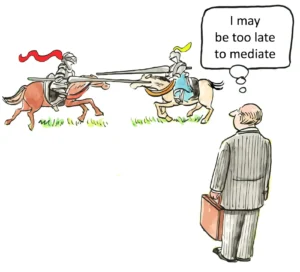Everything You Need to Know About Legal Transcription in 2026
Legal transcription in 2026 is no longer just a support service. It now powers litigation, investigations, regulatory work, corporate governance, and internal risk processes.
Firms process more recorded material than ever, and transcript quality has become central to strategy, compliance, and client service. This guide breaks down how the field is evolving, what is driving change, and how attorneys and legal teams can prepare.
How legal transcription is changing in 2026
Hearings, meetings, interviews, internal investigations, and compliance sessions are routinely recorded. Hybrid hearings and remote depositions are standard, and arbitration or mediation often includes remote participants. Teams now process a wider mix of audio sources, each with its quirks.
Turnaround expectations keep rising. Attorneys need transcripts ready for strategy discussions, filing deadlines, and client updates. Support teams work through poor audio, inconsistent sound quality, and large file sizes, producing documents that feed discovery notes, summaries, timelines, and day-to-day case prep.
Digital evidence adds complexity. Firms gather surveillance clips, video calls, recorded training, and mobile audio from field staff. This increases accents, environments, and sound issues to manage.
How AI and tools are reshaping transcription work
AI transcription tools are now widely adopted in legal workflows. In 2026, most teams use AI to generate first-draft transcripts, separate speakers, mark timestamps, and produce structured files for human refinement. This saves time on urgent deadlines and helps attorneys quickly identify relevant sections for strategy.
AI also supports discovery preparation by searching long recordings for keywords, topics, or key moments, allowing early case assessments before formal review. These tools are often paired with secure platforms where attorneys and reviewers can comment, correct, and approve sections collaboratively.

The workflow depends on a strong technical foundation. Secure audio handling, encrypted transfers, compliant storage, access controls, and audit trails are essential. Human oversight remains critical, with editors, reviewers, and trained transcriptionists ensuring accuracy, formatting consistency, and jurisdictional compliance.
A practical example of this blended workflow is the use of HappyScribe’s audio-to-text tool. Legal teams sometimes upload recordings, generate a quick draft, and immediately begin reviewing specific sections. Humans then refine the file to ensure terminological accuracy, alignment with required formats, and consistency with jurisdictional standards.
Where automation helps, and where humans still matter
Automation supports legal transcription by handling the early structural tasks. AI identifies speakers, segments conversations, detects basic errors, and organises large volumes of material efficiently. It can process an entire day of hearings in a shorter period than any human team. It also provides timestamps consistently, which helps attorneys build timelines and track specific statements.
Human transcriptionists, on the other hand, recognise tone, context, and intent. They understand legal terminology across litigation, regulatory matters, and corporate governance. They know how to format transcripts in ways that comply with court requirements. They can assess messy audio and understand the implications of misheard terms. Human expertise is also essential for verification.
In 2026, the most reliable approach uses AI for speed and human skill for accuracy.
Choosing the right transcription provider
Legal transcription providers play a critical role in modern firms. Attorneys rely on them to deliver documents that are accurate, consistent, and ready for legal use. When evaluating a provider, teams usually look at several factors. Accuracy rates matter, especially when dealing with technical language or specialist subject areas.
Security is a major concern in 2026. Providers must demonstrate strong data handling practices. This includes encrypted file transfer, secure storage, role-based access, detailed logging, and strict confidentiality protocols. Legal teams need assurance that sensitive recordings will not leak, be mishandled, or end up in environments that do not meet professional expectations.
Another factor is turnaround speed. Firms often need transcripts urgently. Providers should have workflows that support rapid delivery without compromising quality. Pricing must be transparent and predictable. Experience with legal recordings is also essential. Providers familiar with courtroom audio, depositions, expert testimony, and regulatory hearings tend to deliver more reliable results.
The rules shaping accuracy, privacy, and compliance in 2026
Compliance in 2026 demands careful handling of every aspect of transcription work. Legal teams must align with updated privacy laws, tighter security expectations, and clearer chain-of-custody standards.
Courts, regulators, and professional bodies continue to refine their requirements for audio transfer, transcript formatting, and authentication procedures.
Key areas include:
- Encrypted transfer of all recordings
- Documented chain-of-custody for sensitive audio
- Access controls that restrict who can view, edit, or download files
- Secure storage that meets jurisdictional retention rules
- Standardised formatting for court filings and appeals
- Clear certification statements
- Audit trails for every stage of the transcription process
- Compliance with cross-border data requirements
Firms also face higher expectations for internal oversight. Many organisations now conduct internal audits of their transcription processes. They verify that audio is handled inside approved systems and that transcripts remain consistent with required standards.
As workloads grow, compliance officers expect teams to use tools that support accuracy without creating additional privacy risks.
What professional legal transcription now requires
Legal transcriptionists in 2026 need a broader, more specialised skill set than previous generations of professionals. The role now blends legal knowledge, technical fluency, critical listening, and consistent adherence to strict formatting and compliance expectations.
- Strong understanding of legal context, including why specific phrases, pauses, or exchanges matter inside litigation, arbitration, governance work, or regulatory investigations.
- Fluency in courtroom terminology, corporate governance vocabulary, and language used in compliance, finance, employment law, and technical subject areas.
- Ability to recognise significance in phrasing and interactions, especially when statements carry evidentiary weight or influence legal interpretation.
- Familiarity with transcript formatting rules for courts, arbitration bodies, appeals processes, and corporate investigation protocols across multiple jurisdictions.
- Skill in switching between different formatting templates without hesitation or slowdown when handling large volumes of work.
- Technical fluency across secure review platforms, AI draft tools, encrypted storage systems, case management software, timestamped review environments, and controlled-access document libraries.
- Comfort working with AI-assisted first drafts and refining them into legally reliable final documents.
- Understanding of chain-of-custody expectations, data-handling requirements, and internal compliance rules for storing and transferring sensitive audio.
- Experience with advanced audio handling, including noise-heavy recordings, overlapping voices, poor microphones, remote hearing setups, and mobile-captured evidence.
- Ability to interpret unclear moments accurately while avoiding assumptions and preserving the exact wording and tone of each speaker.
- Commitment to consistency across long transcripts, ensuring terminology, speaker identification, timestamps, and structural conventions remain steady throughout.
- Ongoing development through legal-specialist courses, transcription certifications, jurisdiction-specific training, and tools that support accuracy and workflow efficiency.
- A strong focus on ethics, confidentiality, and professional judgment when handling sensitive testimony, internal interviews, and unfiltered evidence.
How professionals keep accuracy high without slowing down
Accuracy hinges on a steady workflow. Most teams let AI produce a draft, then a transcriptionist checks it against the audio and fixes terminology or unclear lines. A final reviewer handles consistency and formatting so mistakes stay low without slowing the process.
Clear communication with attorneys matters just as much. When transcriptionists know the case, the terms, and the key people, they work faster and avoid guesswork. Good context upfront cuts review time.
Templates and glossaries also play a quiet but important role.
- Templates keep formatting uniform across courts.
- Glossaries handle technical language and reduce back-and-forth.
In the end, accuracy comes from predictable systems. When teams follow a repeatable workflow, the work stays clean and the turnaround stays reasonable.
Where legal transcription fits into everyday legal work
Transcription supports nearly every legal function. In litigation, arbitration, and dispute resolution, transcripts record hearings and testimony accurately. Corporate governance and regulatory teams rely on them for board meetings, compliance briefings, and audits.
Internal investigations depend on precise transcripts to preserve facts and support decision-making. Transcripts make review efficient and provide a reliable, searchable record.
Turning court proceedings and depositions into usable records
Transcripts convert long recordings into structured, actionable documents. They help attorneys reference testimony, plan trial strategy, prepare cross-examinations, and support appeals. Accurate formatting ensures transcripts meet courtroom and filing standards.
Capturing testimonies and creating clear legal documentation
Transcriptionists capture exact wording from sworn statements, contracts, interviews, and compliance discussions. Accuracy preserves evidentiary value and regulatory compliance. Consistent formatting, speaker identification, and attention to technical language make transcripts usable for attorneys, investigators, and auditors.
The biggest challenges and opportunities behind them
Legal transcription in 2026 faces several key challenges:
- Confidentiality risks – Handling sensitive audio and video across multiple platforms requires strict security protocols.
- Market pressure – Rising demand for faster, cheaper transcripts puts stress on accuracy and quality.
- Talent shortages – Skilled transcriptionists with legal expertise are in short supply, especially for complex or technical cases.
- Jurisdictional complexity – Varying court and regulatory standards across regions increase the burden on teams.
Growth opportunities include:
- Smarter technology adoption – AI-assisted transcription can improve speed and consistency.
- Upskilling and training programs – Building specialist expertise strengthens accuracy and reliability.
- Streamlined workflows – Combining templates, glossaries, and secure review platforms improves efficiency.
- Enhanced compliance focus – Firms that invest in security and process rigor gain trust and a competitive advantage.
Why adapting now puts legal teams ahead
Legal teams that prepare early for the realities of 2026 position themselves for smoother workflows, faster turnarounds, and fewer compliance risks. Adapting now prevents the stress of last-minute system changes or rushed onboarding later.
Firms that build steady, modern transcription processes gain a competitive advantage. They work more efficiently, support attorneys more effectively, and maintain stronger documentation across all matters.













